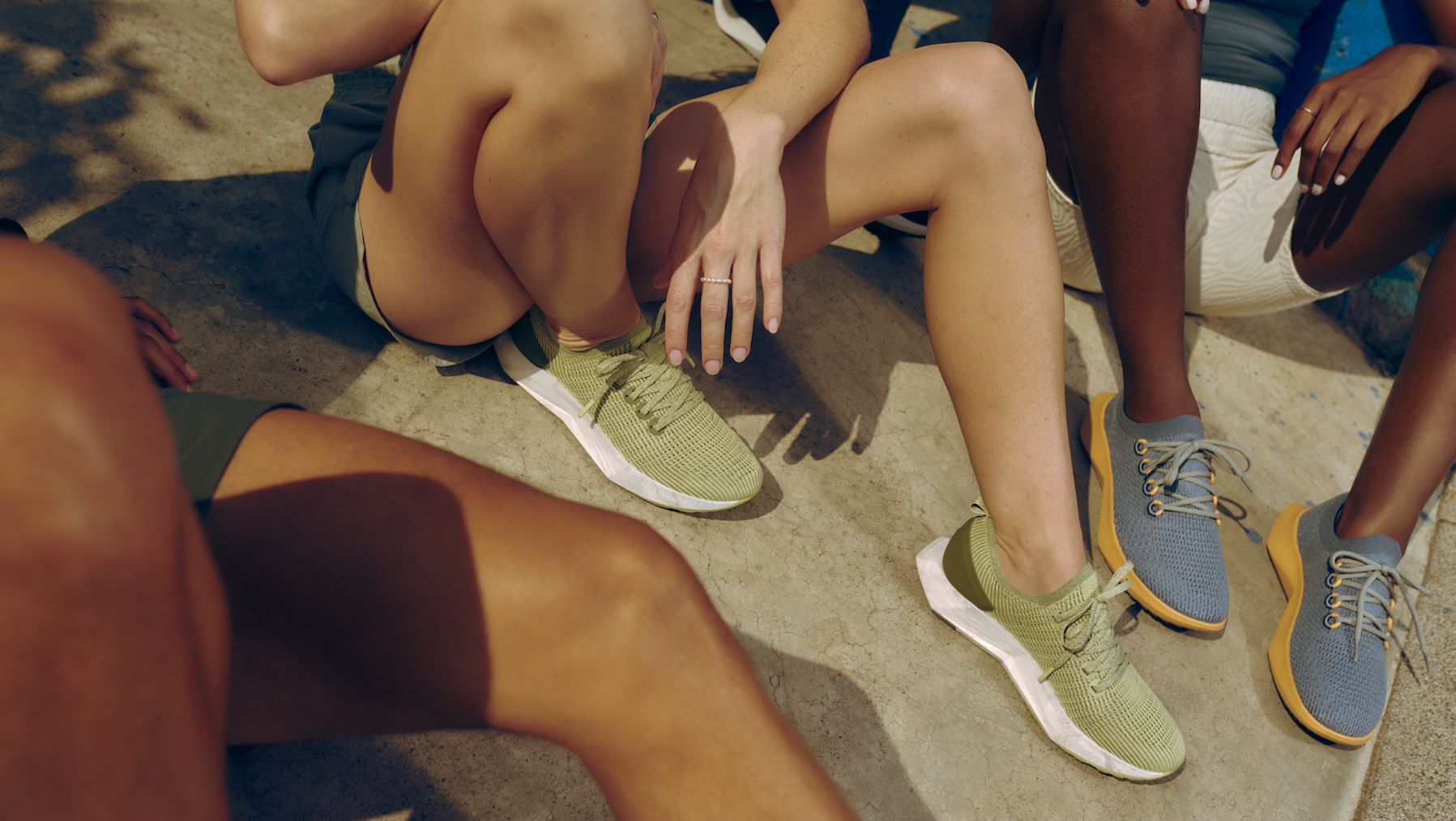Can Allbirds Make Sustainability Sell?
Shortly before Allbirds went public in 2021, it set a target to cut its carbon footprint to virtually nothing by the end of the decade.
Efforts to meet that ambition “are a large part of the reason we expect to grow so quickly,” co-CEO Joey Zwillinger told analysts last February, forecasting a year-over-year sales increase of as much as 32 percent.
Instead, revenue grew just seven percent in 2022, falling for the first time in the fourth quarter. The company lost $60 million on an adjusted EBITDA basis last year. Its shares are trading down more than 90 percent from their listing price, at just over $1 each. The rock-bottom price has fueled speculation that the company could soon be an acquisition target.
The San Francisco-based footwear brand’s turnaround plan rests on building excitement around its products again. But to re-engage its existing audience of eco-conscious consumers — and attract new shoppers — it needs to focus on imbuing newness in its core products.
To do so, it’s once again leaning into its sustainability commitments.
On Tuesday, Allbirds announced it’s figured out how to achieve its holy-grail goal: To develop the world’s first net-zero carbon shoe.
The “Mo.onshot” is made from regenerative merino wool, sugarcane-based foam and bioplastic eyelets. When it gets to market it will be shipped in biofuel-powered freighters and electric vehicles. The emissions associated with its production will be netted out by carbon drawdowns embedded in its materials supply chain.
What remains to be seen is whether consumers — and investors — will care.
Allbirds has put its environmental efforts front and centre in its pitch to both from the start. In 2020 it assigned a carbon “calorie count” to its major products, and it positioned its Nasdaq listing as the world’s first “sustainable” IPO, before regulators pushed back on this framing.
But the company’s environmental mission hasn’t been enough to sustain the business. Its sales have suffered from a costly and distracting push into performance running shoes and apparel, even as its core styles went largely without updates. The brand’s store expansion in the last two years, including a recent expansion into third-party retail with partners like Nordstrom and REI, also did little to drive demand. Meanwhile, the shine has come off the direct-to-consumer boom.
Some analysts have even questioned whether Allbirds’ sustainability focus has become a liability as style and function are still the primary consumer considerations when buying footwear, particularly in the performance category.
“It’s hard to make [a shoe] that is sustainable and that performs well,” said Edward Yruma, managing director and senior equity analyst at investment bank Piper Sandler. “I’m worried they’re forced to make trade-offs that don’t give you the performance you’re looking for.” Allbirds said its products are put through rigorous wear testing to ensure high standards of quality, durability and performance.
Shooting for the Moon
The company’s turnaround strategy focuses on a return to the brands’ roots. It’s cutting costs, pausing new store openings, focusing on operational efficiencies and looking for ways to generate fresh buzz around its original products. It hired a chief transformation officer, aptly named Jared Fix, to help improve operations.
In some ways, Allbirds’ new net-zero carbon shoe delivers what investors want to see: it’s a variation on the company’s classic wool offering that’s intended to speak to its most loyal customers. And it’s an opportunity to position the brand at the forefront of zeitgeisty conversations about fashion’s environmental impact. On Monday, the UN issued a last-chance warning on climate action, the latest in a series of critical reports by the world’s top scientists that, among other things, have helped move efforts to tackle emissions up the agenda for investors.
But Allbirds Mo.onshot shoe also points to ongoing challenges. The materials used in the product are more expensive than conventional ones and the story behind it is complicated. Getting the net carbon footprint to zero comes with design compromises and volume limitations. For example, the wool comes from a single grower in New Zealand and Allbirds is still figuring out what kind of colourways it might be able to offer, given the additional emissions associated with dyeing.
“We know getting consumers excited about something this technical is like threading a needle,” said Allbirds’ sustainability chief Hana Kajimura. “It’s one of, if not the biggest marketing challenge of our time.”
And while the marketing pay off is unclear, there are very real risks. Sustainability is an increasingly fraught topic and carbon accounting is an area of particular complexity. Allbirds says it has squeezed the carbon footprint of its new shoe wherever possible, but at present there’s no getting round some of the impact associated with making, shipping and disposing of a product at the end of its life.
To net out its emissions, Allbirds is rethinking the way it calculates its footprint to take into account carbon sequestration within its supply chain — essentially “insetting” rather than offsetting any residual impact.
“The only way we can get to zero is either if we truly emit nothing, which feels near impossible right now, or if we’re using materials and processes that are sequestering carbon dioxide to balance it out,” said Kajimura.
The company’s still thinking through how to price and position the shoe for the market. It’s planning to open source the Mo.onshot toolkit, hoping to encourage other companies to adopt its approach. The first prototype should be ready to showcase in June. The first products are set to hit the market in 2024, in time to contribute to Allbirds’ effort to return to cash flow profitability by 2025.
Looking Ahead
But experts say the current turnaround plan could take longer than two years, and patience for unprofitable public brands is running thin.
On an earnings call in March, Jim Duffy, a managing director at investment bank Stifel, asked Zwillinger and co-CEO Tim Brown if they were “open to exploring the idea that the best future for Allbirds may not be as an independent entity?”
It’s an idea that has gained currency as the company’s share price has dipped. Though rising interest rates have made private equity firms more risk averse and wary of unprofitable businesses, Allbirds’ market positioning could make it an appealing target for a larger footwear group, according to financial experts who have invested in or advised DTC brands.
The executives demurred. The board and senior leadership see a public and independent future as the best course forward, Zwillinger said.
In many ways the strategy to deliver on that view is simple: simplify, control costs and focus on the core of the brands’ DNA. But it’s also a test of how consumer and financial markets really value sustainability.
“Mo.onshot, as a first of its kind, sustainable product, very much plays into what we know [our consumers] love,” Brown said in an email. “The insight that we launched this brand on still stands: business and sustainability can live hand-in-hand.”

:quality(70):focal(862x517:872x527)/cloudfront-eu-central-1.images.arcpublishing.com/businessoffashion/TRQS326TUJBNVLWFEWSZLWHGGQ.jpg)




